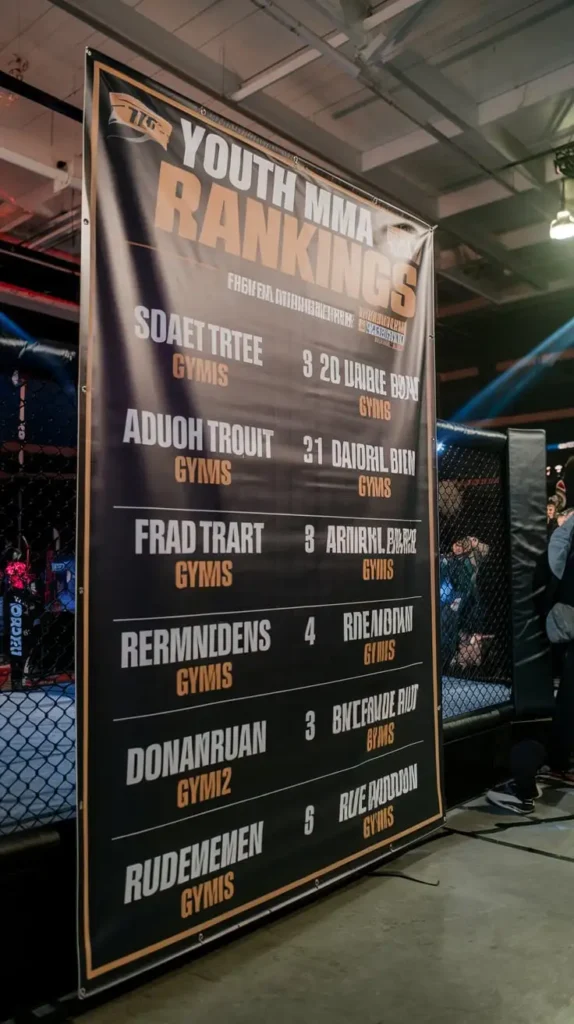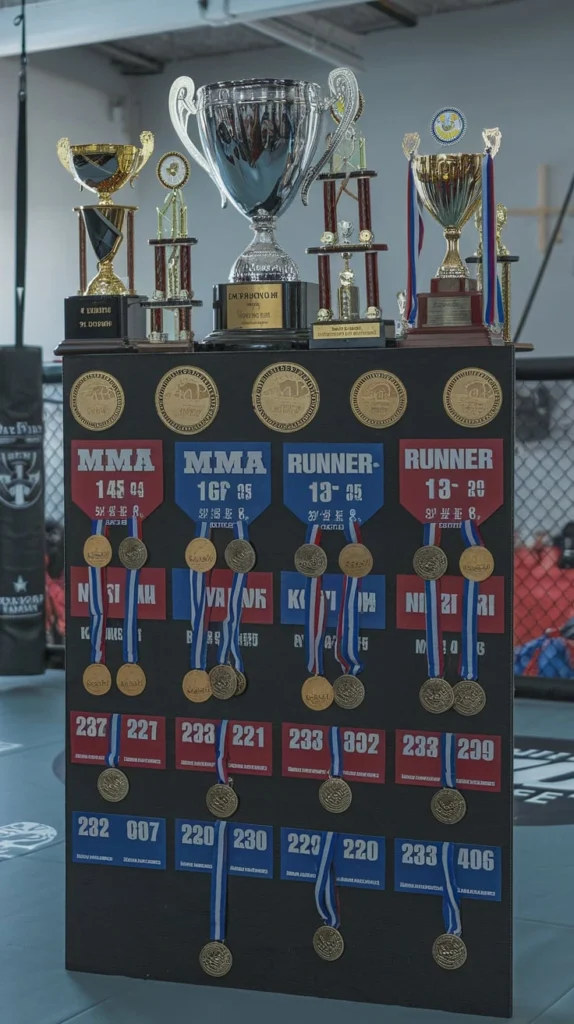Youth MMA rankings are a cornerstone of the mixed martial arts world, showcasing the brightest young talents and giving them a platform to shine. These rankings act as a benchmark for identifying skilled fighters, tracking their progress, and preparing them for professional careers. With youth MMA gaining momentum globally, understanding these rankings has never been more critical.
In this comprehensive guide, we’ll explore the ins and outs of youth MMA rankings, from how they’re determined to their impact on young athletes and the sport as a whole.
Table of Contents
What Are Youth MMA Rankings?
Youth MMA rankings are structured systems used to evaluate and rank fighters between the ages of 8 and 17. These rankings consider multiple factors such as competition results, skill levels, and age categories. They are updated periodically by organizations that oversee youth MMA events.
The primary purpose of these rankings is to promote fairness and transparency while helping fighters set goals and measure their progress. Additionally, rankings make it easier for scouts, sponsors, and coaches to identify top talents and nurture their development.
Youth MMA rankings also create opportunities for young fighters to compete in prestigious tournaments, giving them a taste of professional-level competition. This exposure is invaluable for those aspiring to make MMA a lifelong career.
How Youth MMA Rankings Are Determined
The process of ranking youth MMA fighters is thorough and relies on several critical factors.

Performance in Competitions
Fighters earn points and recognition based on their results in matches and tournaments. Winning against highly ranked opponents carries more weight.
Technical Skills
Judges assess fighters on their technical abilities, such as striking, grappling, and adaptability during matches.
Consistency
Maintaining strong performances over time helps fighters secure higher rankings.
Participation in Recognized Events
Participation in official tournaments hosted by organizations like IMMAF or USFL is often required for ranking eligibility.
Sportsmanship and Discipline
Behavior both inside and outside the ring can impact rankings. Youth MMA emphasizes respect and discipline, which are essential traits for young athletes.
This system ensures that rankings reflect not just raw talent but also dedication, strategy, and the ability to grow as a fighter.
Importance of Youth MMA Rankings
Youth MMA rankings offer numerous benefits for young fighters, their families, and the broader MMA community.

Motivation and Goal-Setting
Rankings inspire athletes to work harder, refine their techniques, and aim for specific milestones.
Visibility and Recognition
Being ranked attracts attention from coaches, sponsors, and even media outlets.
Preparation for Professional Careers
Many professional fighters began their journey in youth MMA. Rankings provide a structured pathway to progress through age divisions and eventually transition into professional leagues.
Building Community and Rivalries
Rankings foster a sense of community among fighters while encouraging healthy rivalries that push athletes to improve.
In essence, youth MMA rankings act as a springboard for young athletes to achieve their dreams in the sport.
Age Divisions in Youth MMA
Youth MMA is divided into several age groups to ensure fairness and safety. These divisions often include:
8–10 Years
Fighters in this age group focus on learning the basics of MMA, including grappling, striking, and defensive techniques.
11–13 Years
As fighters grow, their skills become more advanced, and they compete in higher-stakes matches.
14–17 Years
This division features athletes who are often on the cusp of transitioning to adult competitions. Fighters in this category demonstrate advanced techniques and compete at high levels.
Each age group has its unique challenges and opportunities, allowing fighters to develop progressively as they move through the ranks.
Top Organizations Managing Youth MMA Rankings
Several organizations play a pivotal role in maintaining and updating youth MMA rankings. These bodies ensure fairness, consistency, and safety in the sport.

IMMAF (International Mixed Martial Arts Federation)
IMMAF oversees youth MMA on a global scale, hosting world championships and maintaining international rankings.
USFL (United States Fight League)
USFL focuses on youth MMA in the United States, offering a platform for fighters to compete nationally.
GAMMA (Global Association of Mixed Martial Arts)
GAMMA promotes grassroots MMA globally, supporting young athletes in various regions.
Local Organizations
In addition to global bodies, local leagues often contribute to regional rankings, nurturing talent at the community level.
These organizations collectively shape the landscape of youth MMA, offering fighters opportunities to grow and succeed.
Benefits of Youth MMA Rankings for Fighters
For young fighters, rankings are more than just numbers. They provide tangible benefits that can impact their growth and career trajectory.
Tracking Progress
Rankings allow fighters to see where they stand and identify areas for improvement.
Increased Opportunities
Ranked fighters often receive invitations to exclusive tournaments and events.
Building Confidence
Climbing the rankings instills a sense of achievement and boosts self-esteem.
Networking
Rankings connect fighters with peers, coaches, and sponsors who can support their journey.
These benefits underline the importance of rankings in developing well-rounded fighters ready to tackle bigger challenges.
Challenges in Youth MMA Rankings
While youth MMA rankings offer numerous advantages, they are not without challenges.
Subjectivity in Judging
Variations in judging criteria across events can lead to inconsistencies.
Regional Discrepancies
Fighters from less competitive regions may struggle to gain recognition compared to those in MMA hotspots.
Pressure on Young Athletes
The desire to climb the rankings can sometimes overshadow the enjoyment of the sport, leading to burnout.
Addressing these challenges requires collaboration between organizations, coaches, and parents to prioritize the well-being of young fighters.
How to Get Your Child Ranked in Youth MMA
For parents and young athletes, entering the world of youth MMA rankings can be an exciting journey. Here’s how to get started:
Enroll in a Reputable Gym
Training at a recognized gym with experienced coaches is essential.
Participate in Local Competitions
Begin with smaller tournaments to build experience and gain visibility.
Join Recognized Organizations
Register with organizations like IMMAF or USFL to access official ranking systems.
Focus on Skill Development
Prioritize mastering techniques and strategies over quick wins.
Maintain a Positive Attitude
Demonstrating sportsmanship and discipline can positively impact rankings.
By following these steps, young fighters can embark on a fulfilling and successful MMA journey. Check this to learn more about TOP Youth MMA Tournaments to Watch or Join in 2025
Conclusion
Youth MMA rankings are a vital aspect of the sport, serving as a tool for identifying talent, tracking progress, and preparing fighters for professional success. Despite challenges, these rankings create opportunities and foster growth among young athletes.
With proper guidance, training, and support, youth fighters can climb the ranks, build confidence, and make their mark in the world of MMA. As the sport continues to grow, youth rankings will play an increasingly important role in shaping the future of mixed martial arts.